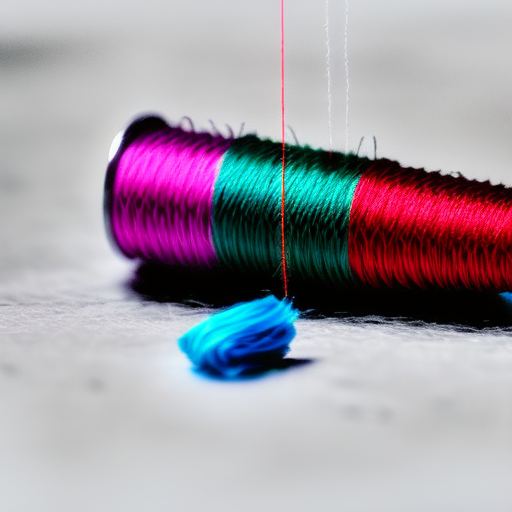
Sewing thread tension plays a crucial role in achieving high-quality stitching. Understanding and adjusting thread tension will ensure a perfect balance between the upper and lower threads, resulting in professional-looking and sturdy stitches. Whether you are a beginner or an experienced seamstress, mastering thread tension is essential for successful sewing projects.
The Basics of Thread Tension
Sewing machines use two threads: the upper thread coming from the spool and the lower thread from the bobbin. These threads must work together to form even stitches.
Thread tension refers to the tightness or looseness of the upper thread as it intertwines with the lower thread. There is a tension mechanism in sewing machines that adjusts this balance. When the threads are balanced, the stitch will appear the same on both sides of the fabric. Too tight or too loose thread tension can cause various issues, such as skipped stitches, puckering, or threads breaking.
How to Adjust Thread Tension
Adjusting thread tension may vary depending on the sewing machine model and fabric type. It’s recommended to consult your machine’s manual for specific instructions. However, here are some general guidelines:
- Start by threading your machine correctly, ensuring the upper thread passes through all the necessary guides and tensions disks.
- Make sure the bobbin is correctly inserted and the bobbin thread is pulled through the tension spring.
- Test stitch on a scrap piece of the fabric you’re using for your project.
- If the stitches are too tight (causing fabric puckering), loosen the upper thread tension by turning the tension dial slightly counterclockwise.
- If the stitches are too loose (with visible loops on top), tighten the upper thread tension by turning the dial slightly clockwise.
- Continue making small adjustments until achieving a balanced stitch.
- Remember to retest on scrap fabric each time you make a tension adjustment.
Common Thread Tension Issues and Solutions
Here are a few common thread tension problems and how to resolve them:
- Skipped stitches: Skipped stitches often indicate too tight upper thread tension. Loosen the tension until the stitches are consistently formed.
- Puckering fabric: Fabric puckering occurs when the upper thread is too tight. Loosen the tension to achieve a smoother stitch.
- Loopy stitches: If you notice loops on the upper side of the fabric, increase the upper thread tension slightly.
- Uneven stitches: Uneven stitches can result from an imbalance in tension. Ensure both upper and lower threads have equal tension.
Remember that each fabric may require specific thread tension adjustments, so it’s important to test your stitches on a sample before starting your project.
Conclusion
Mastering sewing thread tension is a vital skill for every sewing enthusiast. By understanding the basics of thread tension and following proper adjustments, you can eliminate most stitching issues and create flawless and professional-looking garments or projects. Don’t be afraid to experiment and practice, as achieving the perfect thread tension will take some time and experience. Happy sewing!





Make sure your thread is the right weight for the material!
Alexandra Ozburn: Adjust the needle tension to get the correct stitching results!
Beth Benning: Don’t forget to check the thread spool for knots!
Joseph Brown: Make sure to tighten the tension discs properly for quality stitches!
Using the right tension is crucial to sewing projects – if it’s too tight, the thread can break, if it’s too loose, the stitches won’t be secure. Pay attention to your settings to make sure you achieve the desired stitch results!
Setting the correct thread tension is key – don’t underestimate the importance of this step to ensure a successful project!